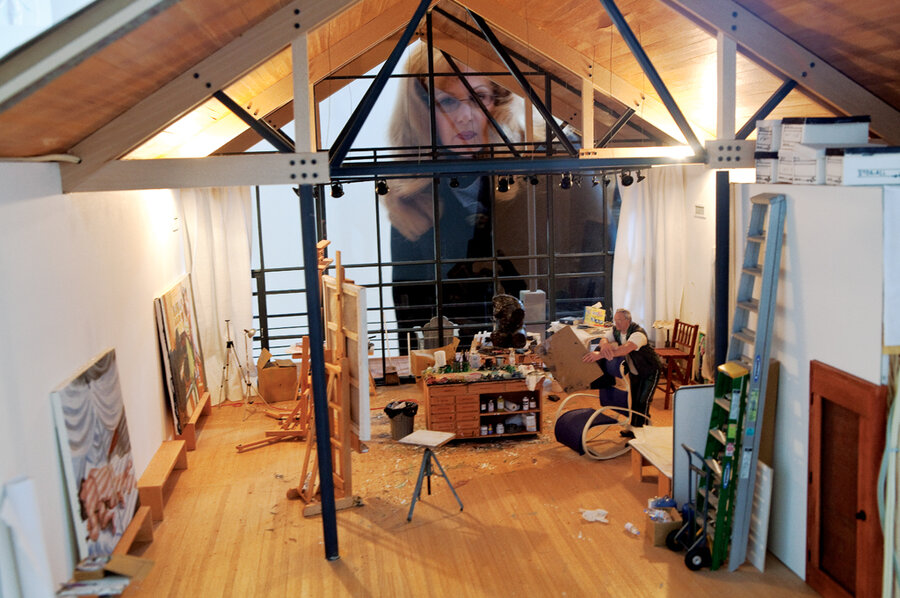Scaling down the artist's studio
Loading...
We imagine an artist's studio as the place where a tortured painter flails away at his masterpiece. It doesn't matter that most of our imagery comes from old movies. Such mythology is not given up easily.
Could there be something evocative and instructive about the spaces in which people make art? This was one of the questions that artist Joe Fig set out to explore. He interviewed 50 established and up-and-coming artists in their studios, turning 20 of those encounters into minutely observed replicas of the artists' paint-spattered worktables or even the entire studio space depicted in miniature.
The goal was "to get better insight into the creative process," Mr. Fig says.
Fig, who has staged exhibitions of these studios in miniature since 2009, recently showed a selection at Massachusetts College of Art in Boston. His book "Inside the Painter's Studio" allows viewers to visit these tiny studios vicariously. The book is studded with photos and includes transcripts of his interviews.
Fig's dollhouse-size studios are small marvels. The most appealing ones include figures of the artists themselves, which Fig modeled out of polymer clay and then painted. The posture and attitude of these artists capture a snapshot of their personalities. In several of the studios, you see the intense concentration of the artist as he or she gazes critically at a work.
Fig depicts each piece of art hanging in the studios, painting the bigger ones freehand and photocopying and hand-coloring the smaller ones.
To make these studios believable at a scale of 1 inch equals 1 foot, Fig had to construct most of his own props, including tiny paintbrushes. "People love miniatures – they find the craftiness of them fascinating," says Fig. "I try to get away from the craftiness by going after detail."
He obsessed over quotidian details; he didn't concern himself with whether his subjects were well known or not. If his replicas don't entirely excite viewers on a deeper level, perhaps it's because most of the artists are not household names. These are painters going about the business of art in their New York lofts and Connecticut barns. Their spaces look respectable, almost unremarkable. So there's not the same thrill of seeing these artists' studios, compared with, say, seeing a miniature replica of Monet's Giverny or Frida Kahlo's Casa Azul. Monet and Kahlo achieved the kind of stardom that attaches to icons. Everything they touched has been endowed with meaning over time.
For Fig, meaning came through realizing there was no magic formula to artistic success. He learned that the most successful artists worked steadily and kept regular hours in the studio. He quotes Chuck Close as saying, "Inspiration is for amateurs. The rest of us just show up and get to work."
• To learn more about Joe Fig's work, including a show of new paintings at the Cristin Tierney gallery in New York, visit joefig.com.





